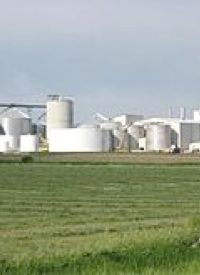
The recent attempt to terminate both the ethanol subsidies of $.45 a gallon and the $.54-per-gallon import tariff on Brazilian sugar-based ethanol by the Senate failed because it was an amendment attached to a bill that was doomed to failure anyway. Both will cease on December 31 automatically, ending 33 years of subsidizing the ethanol industry; however, food prices are likely to stay high anyway.
The main reason is neither the subsidy nor the tariff, but the mandate by the government requiring gasoline refiners to continue to increase their usage of ethanol when blending their gasoline products. Under the 2007 Renewable Fuels Standard, the United States is required to use 12.6 billion gallons of ethanol this year, increasing to 15 billion in 2015, and 36 billion gallons by the year 2022.
The ethanol producers have largely accepted the reality saying that those subsidies of $6 billion a year aren’t needed anymore. With oil prices at $100 a barrel, the fuel blenders such as Valero, Archer Daniels Midland, and POET haven’t needed the subsidies to make a profit, because ethanol costs less than gasoline in many of their markets. Even Bob Dinneen, president of the Renewable Fuels Association, has changed his mind. A year and a half ago he argued that ending the subsidies would cost 112,000 jobs; but now, when asked if the industry needs them, he replied, “No, you don’t. In today’s environment, no, you don’t need it.” Bob Buis, an associate with Growth Energy, an ethanol industry association, agrees: “The industry wouldn’t have happened without it, but we’re in a different position today.”
The real battleground is over continuing the mandates. Sold to the public as a way to reduce the country’s dependency on foreign oil, the effect has been to shift agricultural land from growing food to growing fuel. In 2005, 16 million acres were devoted to growing “biofuels” but by 2010 it took 46 million acres to meet the mandates. That huge shift has contributed to less acreage committed to growing commodities, and higher prices as a result.
At least that’s the conclusion reached by a study just published for the Farm Foundation which stated that the current
[b]iofuels policy has brought about a large, persistent and non-price responsive [sticky price] demand for corn. The combination of mandates and blending limitations…set by the U.S. Environmental Protection Agency regulations determine the corn demand for ethanol, regardless of the corn price…
This shift [to growing corn for ethanol has] contributed to lower production and much higher prices for commodities, such as cotton…
There is little doubt that biofuels play a role in the corn price level…and this has spilled over into other commodity markets.
The logic behind such increases appears, on the surface at least, to be sound. When the supply of something is restricted, the price in a free market will increase, if the demand stays the same. That higher price then eventually brings additional supplies to the market, which brings down the price. It’s classical economic thinking. Bill Lapp, president of Advanced Economic Solutions in Omaha, Nebraska, agrees: “Livestock producers, restaurants, food manufacturers and consumers at the grocery store are all being penalized by this…biofuel policy.” And a recent poll from Rasmussen confirms that people are paying more for their groceries.
But a study from Informa Economics provides a much more comprehensive analysis of the link between high corn prices and resulting high food prices. In fact, according to this study, the link is much more tenuous than originally thought. Renewable Fuels Association president Dinneen says that the study shows “that no statistical evidence exists demonstrating a significant link between ethanol, corn prices, and rising food costs.” The study points out the impact of other factors involved in bringing commodities to market, including labor, packaging, transportation, energy, profits, advertising, depreciation, rent, interest, repairs, and business taxes.
The study also notes that just 16 percent of the cost of a retail food item goes for the raw material “farm value,” with the remaining 84 percent going for the costs involved in bringing that item to market. The study concludes:
While an increase in corn prices will affect certain industries — for example, causing livestock and poultry feeding margins to be lower than they otherwise would have been — the statistical evidence does not support a conclusion that there is a strict “food-versus-fuel” tradeoff that is automatically driving consumer prices higher.
Such an analysis should help in understanding the complexities in the modern retail marketplace, and how interference in that marketplace continues to distort prices. Once ethanol subsidies and tariffs disappear, the next battle will be over the continuing mandates requiring growing food for fuel in the name of oil independence and clean air. In the meantime, those distortions in the market will certainly show up as higher prices at the grocery store, thanks not only to Federal Reserve policies of creating money out of nothing, but also to the government’s continuing efforts through mandates to impose its will on the market.
Photo: Ethanol plant in Turner County, South Dakota



